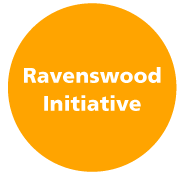The Ravenswood Initiative

Overview
Through the Ravenswood Initiative, CHC has expanded our reach into East Palo Alto and east Menlo Park by channeling services through key partners like Ravenswood City School District, Boys and Girls Clubs of the Peninsula After School Programs, Eastside College Prep, and others. We’re working with these partners to help fill gaps in support and services so students do not fall through the cracks. This means reaching deeper into the community and meeting families where they are at—literally and figuratively. Our approach includes closely examining and addressing the behavioral, emotional, and learning barriers that may be interfering with a child or teen’s potential for success. In Ravenswood, 95% of residents are considered low income, 54% of parents are not high school graduates, and 72% of students are English language learners. Despite a vibrant community, rich with culture, history, and potential, stressful conditions create a collective sense of heightened anxiety, fear, grief, and trauma—all barriers to learning & thriving.
How We’re Working
We work with parents, teachers, and students to provide culturally relevant educational support and behavioral and mental health services (such as social-emotional wellbeing and learning) in order to help kids grow, develop skills, and reach their full potential. Through the Initiative’s needs assessments, we’ve developed a highly effective workshop/consultation model that focuses on bilingual parent education and consultations, teacher professional development and consultations, evaluation, and therapy. During the current school year we’ve directly served 250 parents, 330 teachers, and provided 110 consultations for students.
Ongoing Program Plans
- Seeing more kids at our pilot sites, including Ravenswood public schools, Eastside College Prep, and Boys & Girls Clubs of the Peninsula.
- Expanding our reach in the community and focusing on early intervention. We’re starting small but plan to implement the Initiative’s model at new school sites that work with children ages 2-5.
- Increasing program evaluation efforts, offering significant data on a consistent basis that will help inform our team and our collaborators and will allow our program to remain relevant and sustainable


